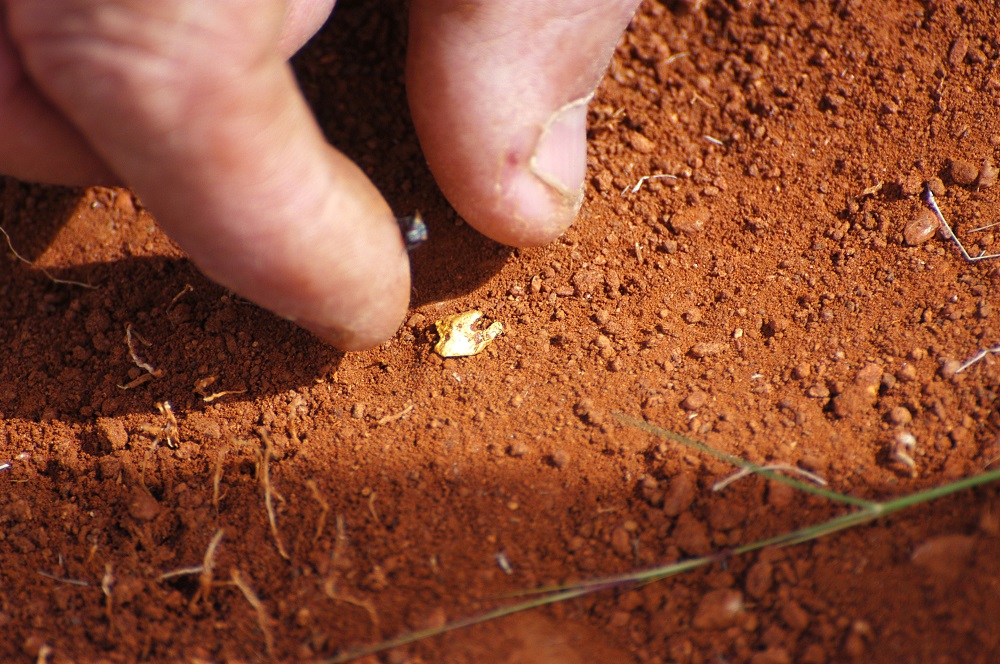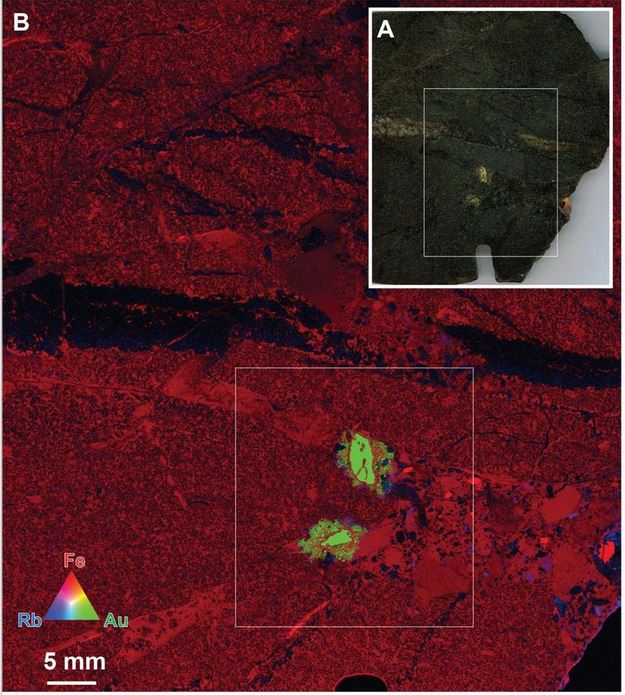
In 2017 the discovery of watermelon seed-shaped gold nuggets in the Pilbara goldfields sparked curiosity. Which led us to wonder, what the source was of these unusually-shaped yellow rocks?
Similar gold conglomerate deposits have also been found in South Africa. A conglomerate is sedimentary rock made up of chunks of various materials which in this case includes deposits of gold. So, speculation on how the Western Australian gold formed, and what this means for further prospecting, fuelled a modern-day gold-rush.
Our scientists took up the challenge and their latest results are unravelling the mystery of the origin of the Pilbara gold. Where did these distinctive gold nuggets come from and what clues do they hold for more gold hiding out in the region?
Mineralogical CSI
Two competing theories were proposed to explain the distribution and appearance of the Pilbara nuggets.
While some looked like the seeds of a watermelon, the nuggets ranged in size and shape. This suggests they may have been caused by a rough and tumble life in ancient river-beds in a sedimentary process. This involves weathering and erosion by wind, water and waves, breaking up the rock into smaller sediments which are then compacted and squashed into another form of rock, called conglomerate.
Alternately, the gold conglomerate may have been transformed and modified through hydrothermal events. This occurs where hot fluids seep through faults and cracks in the rock causing the metal to deform under high temperature and pressure.
Using advanced characterisation equipment, our scientific sleuths have been able to examine the geology and geochemistry of samples taken from the region.
Precision imaging

Maia Map of nugget-bearing conglomerate sample from Purdey’s Reward project. (A) photomicrograph of sample showing location of nugget. (B) RGB map of field of view highlighted by box in (A), showing distribution of iron (red), gold (green), rubidium (blue).
The imaging results of these 2.8-billion-year-old rocks has unearthed key information about the history of the nuggets. The data suggests a clear hydrothermal influence at some point in their history.
Whether they were originally formed through sedimentary processes is harder to confirm. Hallmarks of their sedimentary origin may have been obliterated by later occurring hydrothermal processes.
The next step in unravelling the life story of the Pilbara nuggets is trying to date the hydrothermal events which have left their mark on the conglomerates. Our scientists are hard at work trying to determine the scale of the hydrothermal activity throughout the Pilbara.
Understanding how these deposits form is invaluable when determining new areas for gold exploration.
To learn more about our research in mineral exploration and discovery, drop by our booth at the Australian Exploration Geoscience Conference (AEGC) in Perth from 2 to 5 September 2019.


20th October 2019 at 2:25 pm
Of course there is a hydrothermal influence. See the 2014 paper, ‘Regional-scale Metasomatism in the Fortescue Group Volcanics’. CSIRO hasn’t provide anything new here at all.
11th September 2019 at 12:25 pm
That picture with the finger and the nugget… the nugget looks awfully like a cross-section of marine algae stem that I see in many limestones. I wonder if the gold is a replacement for calcite in an altered dolostone?
13th September 2019 at 3:48 pm
Hi Jill,
The picture in the blog is from Shutterstock, so, unfortunately, we aren’t able to deduce the origin of the gold featured and answer your question.
Thanks for your question.
Kind regards,
Kashmi
CSIRO Social Media Team
6th September 2019 at 4:49 pm
We are told by scientists all of the heavy elements were created by supernova. The merger of two planetary bodies in September 2018 has been conjectured to have created four earth sized volumes of gold. My guess is, shooting stars contain gold and it falls like raindrops into the sea. If the raindrop shape is cut in half vertically, the cross section resembles a watermelon seed. Parts of Australia have been under the sea three times since Gondwanaland broke up
4th September 2019 at 8:36 am
It was 2017, not 2007.
4th September 2019 at 10:16 am
Oops. Thank you for picking up that typo, Melissa. It’s been corrected.
Kind regards
Nikki
CSIRO Social Media Team